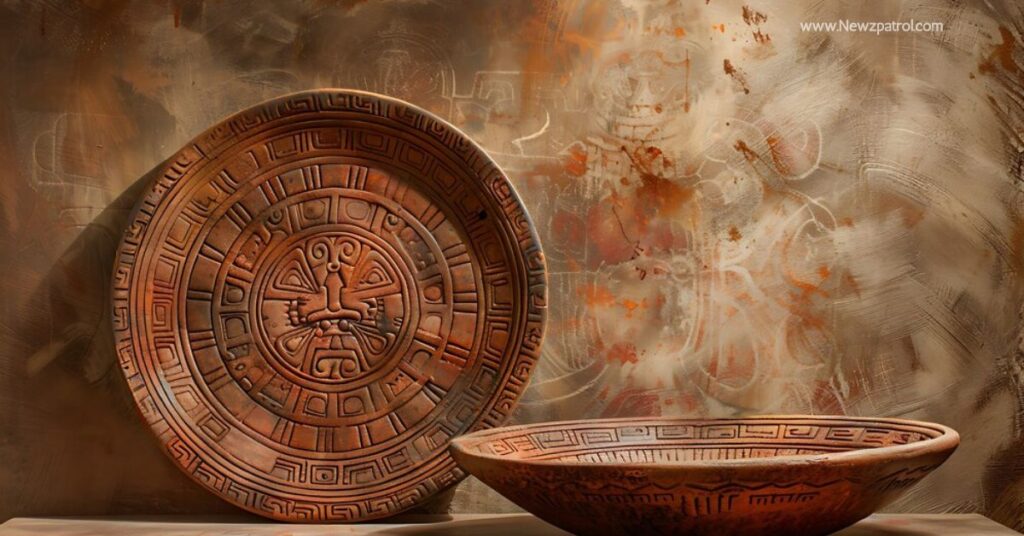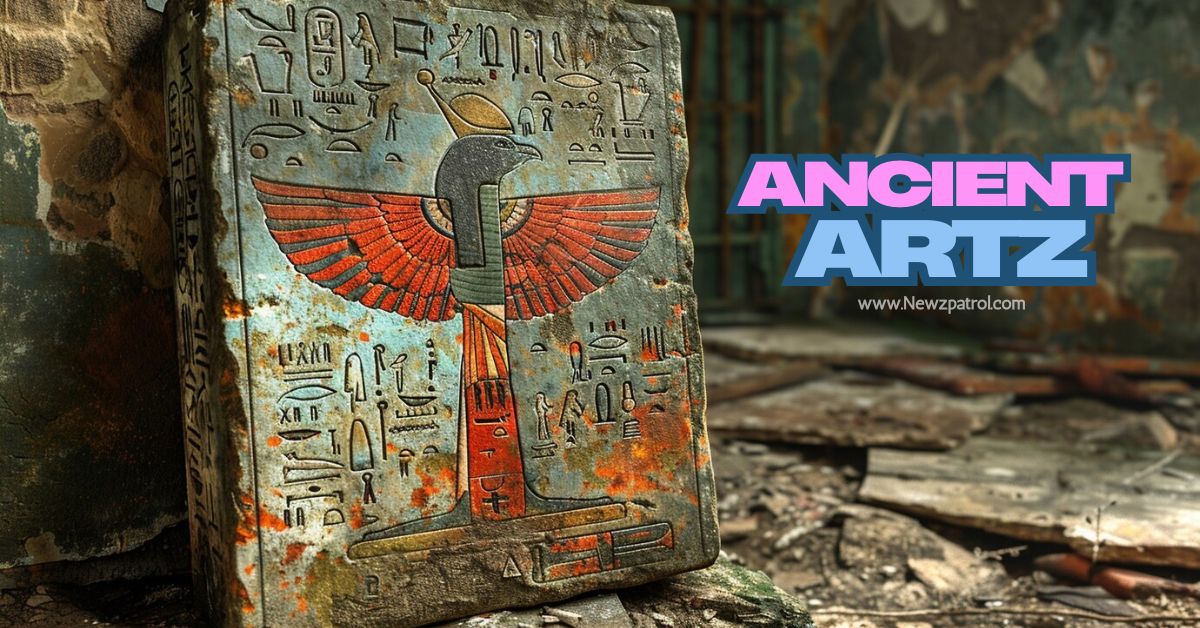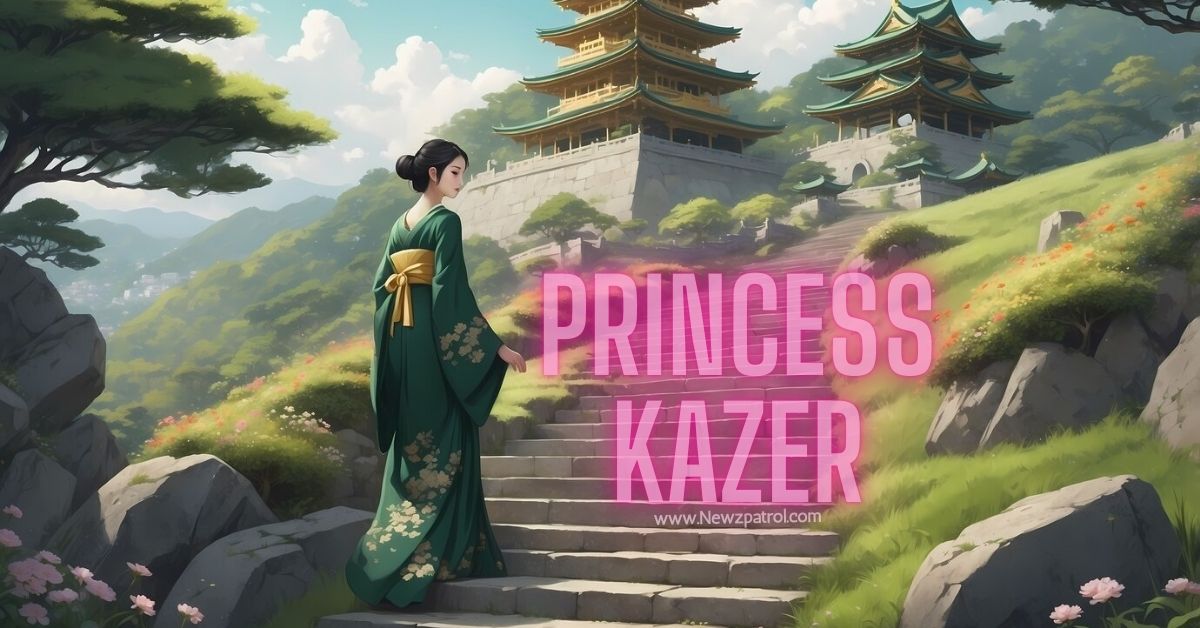Step into the vibrant world of ancient artz, where creativity knows no bounds and stories are etched in time. Imagine wandering through dimly lit caves, marveling at the flickering shadows cast by torchlight as you gaze upon breathtaking paintings that whisper tales of our ancestors. From rudimentary symbols on stone to intricate sculptures standing tall against the sands of time, art has always been a reflection of human experience. Join us on a journey through history, exploring how diverse cultures shaped their identities through artistic expression. The evolution of ancient artz awaits – let’s uncover its captivating layers together!
From Cave Paintings to Statues: The Evolution of Ancient Art
From the flickering glow of firelight, our ancestors began their artistic journey. Cave paintings were more than mere images; they captured life, belief, and survival. Bold strokes depicted hunts while animal symbols sparked inspiration.
As time unfurled, art evolved alongside civilizations. Sculptors chiseled figures from stone, breathing life into stillness with statues that conveyed emotion and power. Each culture added its unique flair—bold lines here, intricate details there.
These transformations didn’t just reflect artistry; they mirrored society’s growth. The transition from cave walls to monumental sculptures revealed a quest for permanence in an ever-changing world—a testament to humanity’s desire to leave a mark on history.
Mesopotamia
Mesopotamia, often called the cradle of civilization, birthed some of the earliest forms of ancient artz. Here, artists skillfully carved intricate reliefs and created stunning pottery that reflected their vibrant culture.
The use of cuneiform writing on clay tablets also emerged during this time, showcasing a blend of creativity and communication. These artifacts reveal stories from mythology to daily life.
Sculptures like those found in temples depicted gods and rulers with divine grace. The attention to detail in these works demonstrated not just artistic talent but also a deep reverence for spirituality that permeated Mesopotamian society. Art was more than decoration; it was an essential part of their identity.
Hittite
The Hittites, a powerful ancient civilization, thrived in Anatolia around 1600 to 1178 BCE. Their art reflected both sophistication and practicality. Using stone and bronze, they crafted intricate reliefs that adorned temples and palaces.
Hittite sculptures captured the essence of their gods and rulers. Statues often portrayed fierce lion motifs, symbolizing strength and protection. These artworks showcased their mastery of form while telling stories steeped in mythology.
Moreover, pottery was an essential part of Hittite life. Ornate designs decorated vessels used for everyday purposes or ceremonial events. Each piece bore witness to the rich culture that celebrated artistry intertwined with daily existence—an enduring legacy within the realm of ancient artz.
Bactrian
Bactrian art reveals the soul of an ancient civilization nestled along the Silk Road. With its unique blend of influences, it flourished between the 3rd century BCE and the 1st century CE. Intricate designs showcased a palette rich with vibrant colors.
Sculptures carved from stone and clay depicted deities and mythical creatures, embodying both spirituality and daily life. The craftsmanship was remarkable, using techniques that emphasized detail and emotion.
The Bactrians were also masterful jewelers, creating exquisite pieces adorned with precious stones. Each artifact tells a story—whispers of trade routes bustling with ideas and goods traveling far beyond their homeland. This artistic legacy continues to inspire awe today.
Achaemenid
The Achaemenid Empire, stretching from the Indus Valley to Thrace, was a melting pot of cultures. This diversity breathed life into their artz, showcasing intricate carvings and stunning reliefs that adorned grand palaces.
Persian artisans mastered stonework, creating monumental sculptures like the majestic Apadana staircase at Persepolis. Each figure depicted would convey power and grace, celebrating their grandeur.
Their artistic endeavors echoed themes of unity and strength. The famous ceremonial capital dazzled with vivid colors and elaborate motifs that told stories of gods and kings alike. Through these works, ancient people immortalized their legacy for generations to admire.
Phoenician
The Phoenicians, master seafarers and traders, crafted a unique legacy in ancient artz. Their vibrant textiles and intricate pottery showcased artistry that mesmerized the Mediterranean world. Every piece told stories of gods, nature, and daily life.
Their iconic purple dye became synonymous with luxury, transforming garments into symbols of wealth. This craftsmanship was not just functional; it reflected their deep connection to the sea and trade routes they navigated.
Phoenician sculptures often depicted deities and mythical creatures, intertwining culture with spirituality. These artistic expressions reveal a civilization rich in creativity and innovation—a testament to their enduring influence on subsequent cultures throughout history.
Pre-Islamic Arabia
Pre-Islamic Arabia was a vibrant tapestry of cultures and traditions. The Arabian Peninsula, rich in resources, became a melting pot for artistic expression. Nomadic tribes thrived alongside settled communities, each contributing to the evolving landscape of ancient artz.
Rock carvings and intricate pottery showcased their creativity and beliefs. These artifacts spoke volumes about daily life, spirituality, and social structures. Every piece told a story that transcended time.
The iconic sculptures found in the region reflect deep connections to nature and ancestral reverence. Artists poured their emotions into every chiseled figure or painted surface, leaving behind an enduring legacy that would influence generations to come.

Minoan
The Minoans, thriving on the island of Crete, were pioneers of ancient art. Their vibrant frescoes adorned palace walls, showcasing scenes of nature and daily life. These artworks burst with color and energy, reflecting a culture deeply connected to its surroundings.
Their pottery was equally captivating. Elaborate designs featured swirling patterns and marine motifs that celebrated their seafaring lifestyle. Each piece told a story, merging function with beauty seamlessly.
Sculpture flourished in Minoan society too. Small figurines depicted worshippers or deities, often crafted from clay or stone. These works hinted at complex religious beliefs while revealing the skillful hands behind them—a true testament to the artistry of ancient civilizations.
Mycenaean
Mycenaean art radiates power and sophistication. Emerging around 1600 BCE, this civilization flourished in Greece, leaving a lasting mark on ancient artistry. Their pottery is adorned with intricate designs, showcasing scenes of warriors and mythical creatures.
The iconic frescoes from palatial complexes like Knossos reveal the vibrancy of their culture. Bold colors capture dynamic movements that breathe life into their narratives. Each brushstroke tells stories of gods and heroes, connecting mortals to the divine.
Metalwork also thrived, especially gold craftsmanship. The golden mask of Agamemnon stands as a symbol of wealth and prestige. Mycenaean artisans blended functionality with beauty, ensuring their legacy would endure through time’s embrace.
Etruscan
The Etruscans, an enigmatic civilization in ancient Italy, left behind a treasure trove of art. Their vibrant frescoes adorned tombs, telling stories of the afterlife and celebrating life’s joys. Each brushstroke reveals their deep connection to spirituality and nature.
Sculpture was another hallmark of Etruscan artistry. They crafted striking terracotta figures that captured human emotions with remarkable finesse. These creations often depicted scenes from mythology and daily life, bridging the gap between the earthly and divine.
Etruscan craftsmanship extended to metalwork as well. Gold jewelry sparkled with intricate designs, showcasing both skill and creativity. Through these artifacts, we glimpse a society rich in culture—one that thrived long before Rome’s dominance took hold.
Conclusion
The journey of ancient artz reflects the evolution of human expression across cultures and time. Each civilization, from Mesopotamia to Etruscan societies, has left its mark through unique styles and techniques that capture their essence. These artistic treasures tell stories of our ancestors, revealing their beliefs, values, and experiences.
As we explore these fascinating developments in ancient artistry, we find a common thread – the desire to communicate beyond the limitations of spoken language. The rich tapestry woven by these early artists continues to inspire modern creators today.
Embracing this legacy encourages us all to appreciate the beauty around us. As we look back on this engaging history, let it ignite your creativity and spark new ideas for future generations to cherish.
Read More Articles On Our Site!










